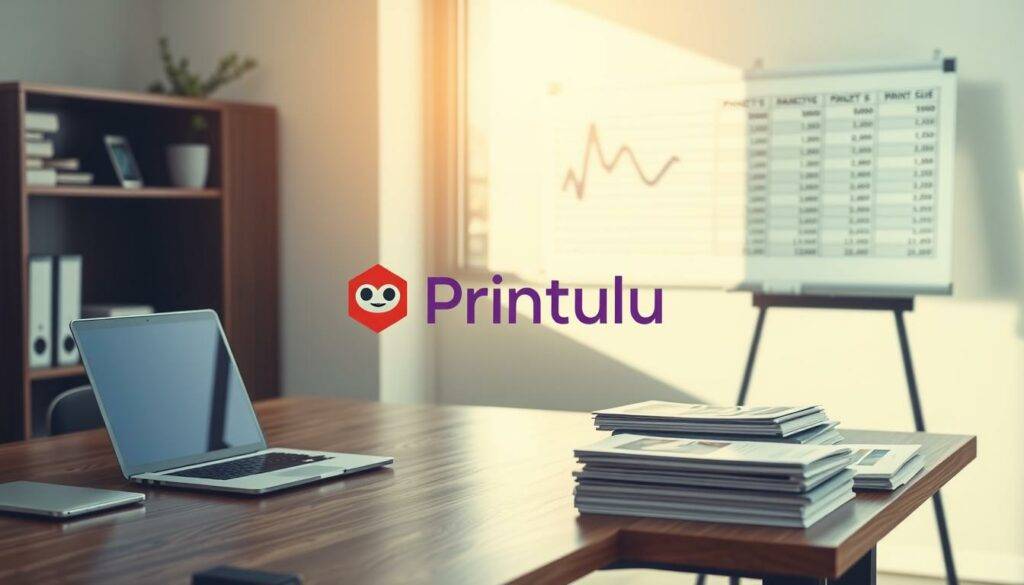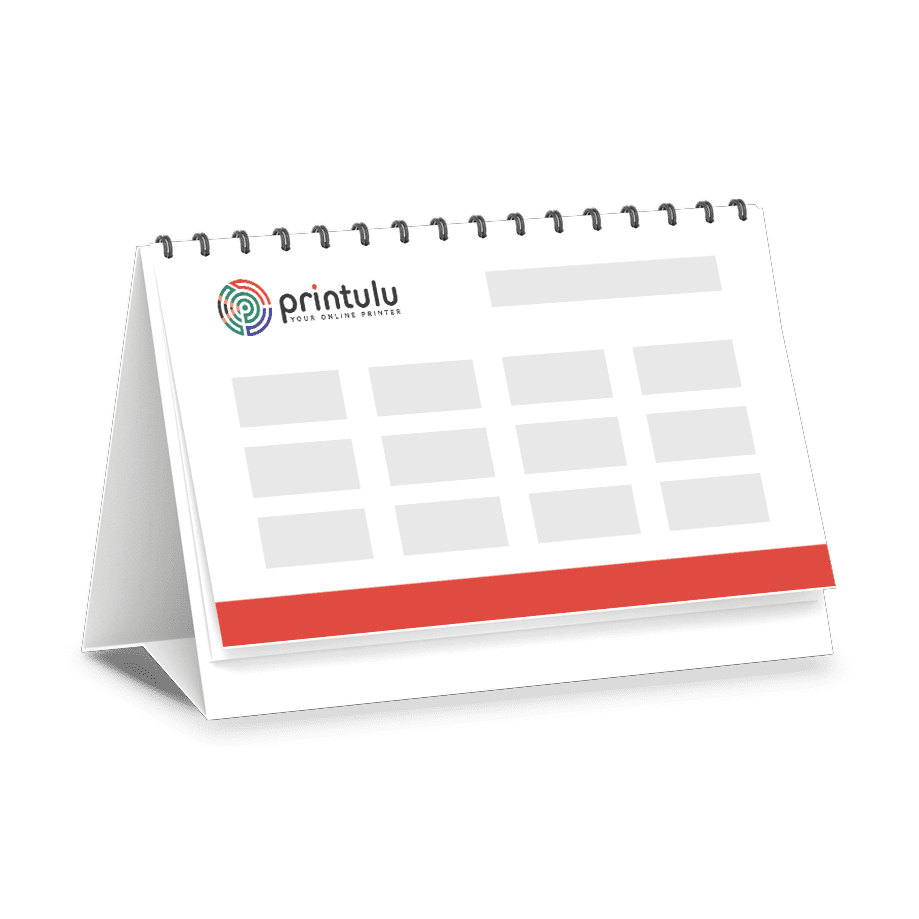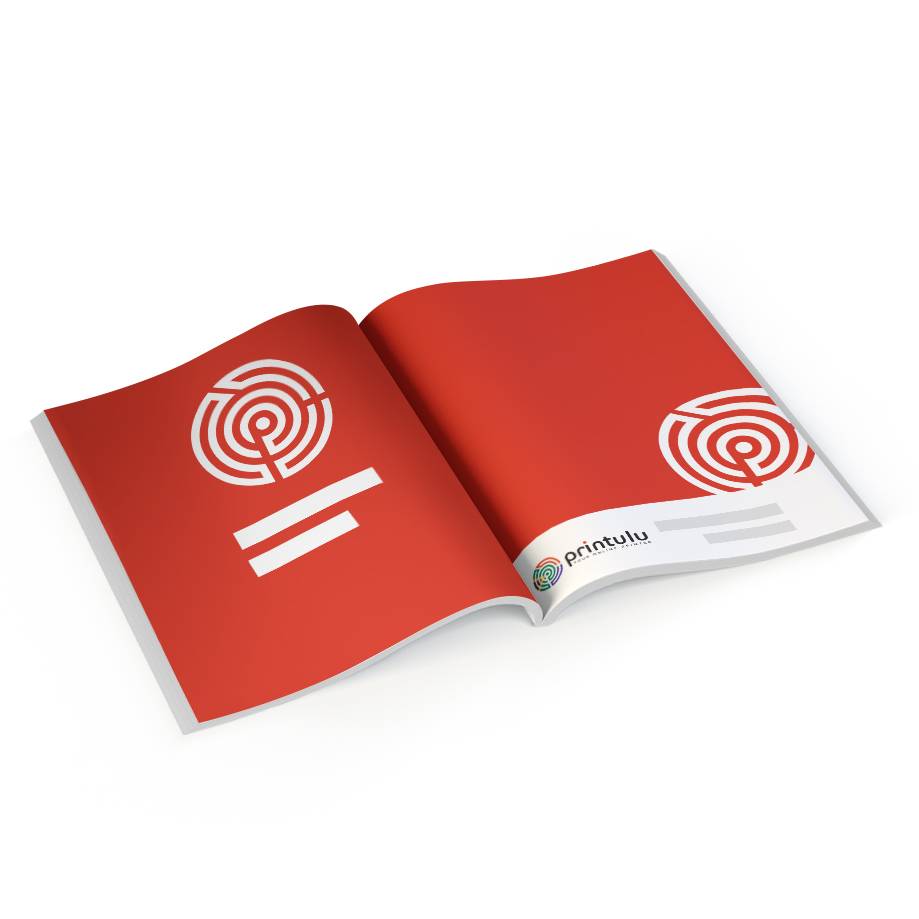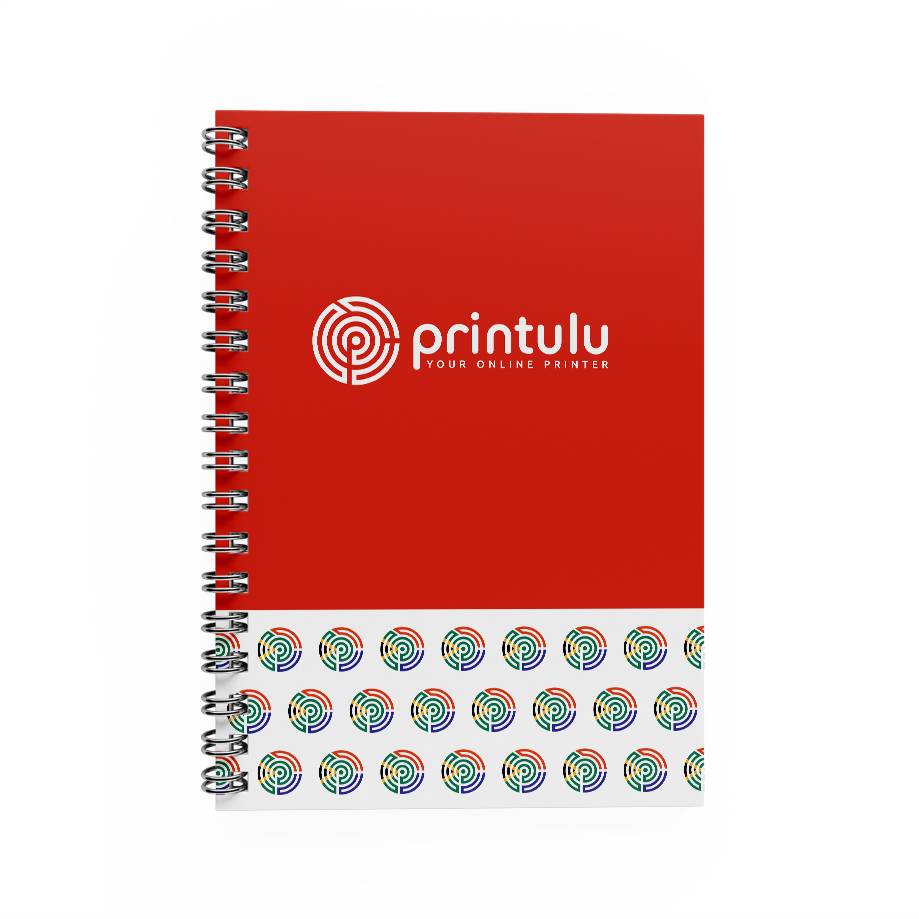In today’s fast-paced digital world, some might think print marketing is old news. But, the facts show it’s still key for brands. 56% of consumers trust print more than online ads. Print offers a rich experience that digital can’t match, building strong brand bonds.
In South Africa, mixing old and new marketing is a winning strategy. Print’s touch and feel are vital for building trust and engaging with customers.
While digital ads are quick, print marketing’s unique qualities leave a lasting mark. Holding a brochure or getting a postcard feels special. These physical touches boost brand trust and deepen customer connections.
Key Takeaways
- Print media marketing strategies complement digital efforts, offering a trustworthy and engaging platform.
- Effective print advertising holds a unique persuasive power that can enhance brand recall and credibility.
- Tactical print promotion utilises the tactile and sensory aspects of marketing materials to captivate audiences.
- In-depth understanding of consumer trust in print can inform strategies to garner more substantial engagement.
- Strategically combined print and digital campaigns have proven to boost overall marketing success rates.
Understanding the Basics of Print Marketing
Exploring print media basics, print marketing includes newspapers, magazines, flyers, and brochures. These are used to promote products or services directly to people. The physical touch of print materials helps create a lasting impression and connection with the audience.
What is Print Marketing?
Print marketing uses printed materials to share a brand’s message or ad with its audience. It’s a key strategy in marketing, even in today’s digital world. It reaches a wide range of people effectively.
Print marketing’s benefits start with building trust. Research shows 82% of people trust print ads more when buying something. This highlights the trustworthiness of physical ads.
Key Benefits of Print Marketing
Print marketing is great at engaging people. Direct mail can get up to a 9% response rate, much higher than email’s 1%. This is because print offers a sensory experience, leading to a stronger emotional connection and better memory.
Also, print can be seen many times. Materials stay in homes and offices, giving brands ongoing chances to make an impact.
Print vs. Digital Marketing
Even though digital marketing has grown, print ads are still very effective. Print ads cost more but build more trust and leave a stronger impression.
Using both print and digital marketing can be even better. It can increase a campaign’s success by up to 400%. This combines the best of both worlds for better marketing results.
To show the balance between print and digital, look at the table below:
| Marketing Type | Consumer Trust | Response Rate |
|---|---|---|
| Print Marketing | 56% | 9% (Direct Mail) |
| Digital Marketing | Less Trust | 1% (Email) |
These numbers show why using both print media basics and print and digital synergy is key for effective marketing today. It helps reach a wide and varied audience.
Choosing the Right Print Materials
Print marketing can really sway what people buy, with 82% of consumers using print ads to decide. It’s key to pick print materials that match your brand and audience. Knowing the different types of custom stationery, flyers, and promotional print merchandise helps make your marketing stand out.
Flyers, Brochures, and Posters
Flyers and brochures are great for sharing lots of info. They come in weights from 80 to 170 GSM, offering flexibility or durability. Posters, meant to catch eyes from afar, need a weight over 200 GSM to stay in good shape.
Business Cards and Stationery
Business cards are key for networking. Choose 300 GSM or higher cardstock for a solid, professional feel. For custom stationery, premium paper shows your brand’s quality and care. Adding special touches like embossing or metallic finishes makes every piece memorable.
Specialty Items to Consider
For promotional print merchandise, think about unique items like custom vinyl banners or eco-friendly options. Vinyl is great for outdoors, while recycled materials show your brand cares about the planet. High-quality printing makes your message clear and eye-catching.
Don’t forget about bulk ordering. Buying lots of standard items like flyers can save money without losing quality. This makes big campaigns more affordable.
If you need advice or a good deal on print materials, check out this page. It’s full of useful tips and offers.
Choosing the right substrates and print options depends on your goals and audience. Make sure they work with your printer to avoid problems. This way, your final product will look exactly as you imagined.
Designing Eye-Catching Print Collateral
Creating captivating print designs makes marketing materials look better. It also helps strengthen the brand and engage customers. By using colour psychology and typography, businesses can make their brand more appealing.
Principles of Good Design
Good print design focuses on clarity, balance, and looks. High-quality images can make a brand seem more credible. In fact, 67% of people think images are key when deciding.
Using visual hierarchy can make content 80% easier to understand. This helps customers grasp and remember marketing messages better.
Using Color and Imagery Effectively
Colour can greatly affect how people see and interact with print. For example, contrasting colours can grab attention, boosting engagement by up to 80%. Using colour psychology can also increase brand recognition by 70%.
Important Typography Considerations
Typography in marketing should match the brand’s identity and be easy to read. Good typography can improve readability by 35%. It helps people spot important messages and actions quickly.
Choosing the right fonts is also crucial. They should reflect the brand’s character and work well in different print formats.
In summary, designing effective print collateral requires understanding visual elements and their psychological effects. From typography to colour and imagery, every detail matters. Focusing on these aspects can lead to better customer interaction and loyalty, essential in today’s market.
Target Audience Identification
Knowing who your audience is and what they want is key to making marketing work. By focusing on who you’re targeting, you can make your print marketing better. This means your messages will hit the mark and get results.
Defining Your Ideal Customer
Finding your ideal customer means looking at age, gender, income, and more. It’s about understanding lifestyle and values too. For example, you might target health-conscious people or parents of newborns looking for organic products.
Getting this right can boost engagement and sales by up to 20%. It’s all about knowing your audience well.
Demographics and Psychographics
Customer profiling goes beyond basic demographics to include personality and interests. This helps you understand why people act the way they do. It’s about creating messages that really connect.
For example, eco-conscious consumers, especially millennials, are growing fast. Tailoring your content to these insights makes your marketing more impactful.
Techniques for Audience Segmentation
Segmenting your audience makes your marketing more precise. You can use data from Google Analytics or Facebook Insights. This helps you target based on location, buying intent, and more.
For instance, you might find that 30% of your camping gear website visitors love technology. This means you can focus on products that show off tech features for better engagement.
Use analytics and CRM systems to optimise your print distribution strategies. This ensures your marketing reaches the right people.
Understanding your audience well makes marketing more efficient and effective. It means each campaign has a bigger impact and is more cost-effective.
Crafting Effective Messaging
Effective print marketing is more than just paper and graphics. It’s about creating compelling copy, catchy headlines, and clear CTAs. These elements connect with readers, encourage action, and make your message stick with your audience.
The Role of Headlines and Taglines
Headlines are the first thing people see in your marketing. They must grab attention and make readers curious. Taglines should be short and memorable, capturing your brand’s essence.
Together, headlines and taglines create a strong first impression. This is crucial in print ads where space is limited.
Copywriting Essentials for Print
When writing for print, keep it clear and brief. Your messages should be easy to read but powerful. Use simple language and focus on benefits, not just features.
This approach makes your copy relevant and speaks directly to readers’ needs.
Call to Action Best Practices
Effective CTAs are key to your print marketing success. They guide readers to the next step, like buying or visiting your website. Make your CTA clear and place it where it grabs attention.
| Marketing Type | Trust Level | Response Rate | Popularity in Making Purchase Decisions | Engagement Increase with Digital Enhancements |
|---|---|---|---|---|
| Print Marketing | High (56% of consumers trust print the most) | Up to 9% (Direct Mail) | More trusted than online ads | Significant (with QR codes) |
| Email Marketing | Lower | About 1% | Less | Moderate |
Improving print marketing for local audiences can be very effective. Tailoring messages to local needs builds a personal connection. For more on this, check out print marketing’s impact on brand perception and trust.
Budgeting for Print Marketing Campaigns
Effective print campaign budgeting is key to making a big impact while keeping costs down. It requires careful planning, including cost estimates and finding ways to save money. It’s also about making sure you have enough money for distribution funding.
Estimating Costs for Print Products
Getting the cost right is the first step in setting a good budget for print marketing. Think about the quality of materials, how complex the design is, and how many you need to print. For example, high-quality brochures use special paper and ink, which can raise the cost. Find a balance between cost and to get the best value for your money.
Finding Cost-Effective Solutions
Looking for ways to save money can make your print marketing campaign more efficient. Printing in bulk can lower the cost per item, saving you money if you need a lot. Also, choosing local printers can cut down on shipping costs and support local businesses, saving money and helping the community.
Allocating Budget for Distribution
How you distribute your print materials is crucial for their success. Good distribution funding means thinking about where and to whom you’re sending your materials. Using targeted distribution methods like direct mail or handing out materials at events can make your materials more visible and effective.
| Aspect | Percentage of Revenue | Focus |
|---|---|---|
| High-growth companies | 15%-30% | Scaling businesses rapidly |
| VC-backed startups | 30%-50% | Initial growth push |
| Moderate growth companies | 10%-15% | Sustainable growth management |
| Stable growth companies | 2%-10% | Maintaining market position |

It’s also important to adjust your budget as your business and market change. Regularly check how your marketing spending is doing compared to your results. This can help you find ways to save money and improve your marketing strategy.
Using marketing budget templates can also help you keep track of your spending. This is especially useful for small businesses, as it helps them manage their finances better and make sure their marketing is effective and affordable.
Distribution Strategies for Success
An effective print marketing campaign is more than just good design and content. It’s about how you distribute your materials. Using direct mail, event marketing, and strategic distribution are key to reaching your audience. Let’s explore these important strategies.
Choosing the Right Locations
Where you place your print materials is crucial. You should target areas where your potential customers are likely to see them. This could be busy streets, inside related businesses, or even homes.
Direct Mail Campaigns
Direct mail sends printed materials straight to your customers. It’s more effective than email, with response rates up to 9% for house lists. Materials like letters and flyers build trust and keep your brand in mind.
Events and Trade Shows
Event marketing is a great way to meet your audience face-to-face. At events, you can give out materials like brochures and flyers. These can include QR codes for digital engagement.
Using these strategies can boost your print marketing efforts. Here’s more on how to mix different materials and techniques for better results.
| Material Type | Usage | Benefits |
|---|---|---|
| Flyers | High volumes at events, street distribution | Cost-effective, wide reach |
| Direct Mail Postcards | Targeted mailing lists | High-impact, personalised, relatively low cost |
| Brochures | Trade shows, business partners | Space for detailed information, various design formats |
| Posters | High-traffic areas | Visibility in key locations, good for event promotions |
Measuring the Success of Print Marketing
In today’s market, it’s key to know how your print marketing works. By tracking its success and analysing campaigns, you can spot what works best. Let’s look at how to measure print marketing’s impact.
Key Performance Indicators (KPIs)
Using the right print marketing KPIs is crucial. Important ones like response rates and cost per acquisition show how well your campaigns do. For example, a high response rate means your ads are grabbing people’s attention.
A good customer lifetime value shows your ads are profitable over time. This helps you see which strategies are worth it.
Tools for Tracking Results
There are many ways to track how well your print works. QR codes are popular because they’re easy to use and people like them. In the UK and Europe, over 86% of smartphone users have scanned a QR code.
Unique URLs and promo codes also help track what’s working. They show you which parts of your campaign are bringing in the most results.
Analyzing Feedback and Adjusting
To make your print better, you need to listen to what people say. Use tools like Google Analytics to understand who’s looking at your ads and how they’re interacting with them. This helps you make your ads more appealing to your audience.
| Statistic | Insight | Impact |
|---|---|---|
| 9% print campaign response rate | Significantly higher than digital’s 1% | Indicates strong engagement potential of print |
| 3.3% conversion from QR code scans | Effective use of call-to-action in print | Suggests high-quality leads from print materials |
| 75% recall rate for print ads | Substantially greater than digital’s 44% | Highlights print’s lasting impression on memory |
By using these campaign analysis methods, you can make sure your print campaigns are successful. Keep an eye on your data and make changes as needed. This way, you can get great results without spending too much.
Integrating Print and Digital Marketing
In today’s fast world, mixing print and digital is key for a strong brand story and connection with people. This mix, called print and digital integration, grabs attention in different ways. It helps companies use both mediums well, making their marketing stronger.
By combining these areas, brands can show a unified image. They can also use social media better. Real examples show how this mix can lead to success.
Creating a Cohesive Brand Experience
Having a consistent brand feel in both print and digital is crucial today. Studies show that this approach can boost audience engagement by up to 50%. Print can link to digital with QR codes or augmented reality, increasing interaction by about 20%.
On the other hand, digital can prepare people for print by sharing content or stories. This makes 70% of consumers prefer a mix of both.
Leveraging Social Media for Print Campaigns
Social media is key in linking print and online campaigns. Using Instagram and Twitter can make print campaigns reach more people. For example, #IUsaidYes got over 4,300 Instagram posts, showing social media’s power.
Also, 78% of marketers see better customer retention with both traditional and digital methods. With most people having smartphones, there’s a big chance for campaigns to work well together.
Case Studies of Successful Integration
Many examples show how combining print and digital works well. For instance, mixing direct mail with digital ads boosted conversion rates by 28%. Also, 73% of people scanned QR codes or visited URLs in direct mail, improving brand recall by 46%.
Indiana University’s campaign is a great example. It used a hashtag to share the excitement of getting an acceptance letter online. Looking at these successes can help businesses know how to mix print and digital well. For more tips, check out Printulu.
FAQ
What is Print Marketing?
Print marketing uses printed materials like flyers and posters to promote brands. It creates a sensory experience that connects with consumers.
What are the Key Benefits of Print Marketing?
Print marketing builds trust and engages consumers. It stands out in a digital world. Print materials last longer, making your brand more memorable.
How does Print Marketing compare to Digital Marketing?
Print marketing is more trustworthy and engaging. It offers a sensory experience digital marketing can’t match. Today, the best strategies combine both print and digital.
How do I choose the right Print Materials for my marketing campaign?
Choose materials based on your goals and audience. Flyers and brochures are good for detailed info. Business cards and stationery are great for direct marketing. Consider items like calendars for ongoing visibility.
Why is effective use of Color and Imagery important in Print Collateral?
Colors and images evoke emotions and convey messages. They support your brand’s identity. Using high-quality images and colours enhances your materials’ appeal and effectiveness.
How do I define my Ideal Customer for print marketing?
Analyse your customer’s age, gender, location, interests, and income. This helps tailor your marketing to resonate with your audience’s needs and lifestyle.
What are some Techniques for Audience Segmentation?
Segment your audience by demographics, psychographics, geography, or behaviour. This creates targeted campaigns that speak to specific groups’ interests.
How can I craft an influential Headline for my print materials?
Make your headline catchy, relevant, and concise. It should grab the reader’s attention and entice them to read more. A strong headline is key to your campaign’s success.
What are some Call to Action Best Practices?
Use active verbs and create urgency in your CTAs. Make them clear and direct. Prominent and straightforward CTAs increase engagement.
What factors should I consider when Budgeting for Print Marketing Campaigns?
Consider the quality and cost of materials, design, and print volume. Find a balance between quality and affordability for an effective campaign.
What Distribution Strategies can enhance my print marketing campaign?
Target specific locations and use seasonal events. Direct mail and events can boost visibility. These strategies ensure your materials reach the right audience at the right time.
How do I measure the Success of my print marketing efforts?
Track KPIs like response rates and ROI. Use QR codes and unique URLs to measure engagement. Customer feedback helps improve your campaigns.
Can you provide examples of successful Integration of Print and Digital Marketing?
QR codes on print materials lead to online content. Social media campaigns raise awareness for print releases. This combination strengthens your brand’s message and expands its reach.
Source Links
- The Ultimate Print Marketing Guide – https://www.printingcenterusa.com/blog/ultimate-print-marketing-guide/?srsltid=AfmBOoq1k4IWk2PFNeUpwxXnMM6R1oATgcd0-JqVxEJ46CMZR9Gh4N8I
- Print Marketing Strategies for Small Businesses: Leveraging Print in a Digital World – https://www.linkedin.com/pulse/print-marketing-strategies-small-businesses-leveraging-jjkjf
- The Secrets of Advertising Revealed – https://www.oxbridgeacademy.edu.za/blog/the-secrets-of-advertising-revealed/
- A Guide to Print Marketing – Bigwave Marketing – https://bigwave.co.uk/blog/a-guide-to-print-marketing/
- The Ultimate Print Marketing Guide – https://www.printingcenterusa.com/blog/ultimate-print-marketing-guide/?srsltid=AfmBOor5xGXds0MNLEiBixZ3Ygovmr5WkfEK0eLFG5CaS_09Kj4sO-Pc
- How to Choose the Right Print Marketing Materials – https://digiprintcorporation.com/how-to-choose-right-printing-materials/
- Selecting the Right Flexible Digital Print Media – https://www.maizey.co.za/selecting-the-right-flexible-digital-print-media/
- How to Design Eye-Catching Marketing Materials – https://digiprintcorporation.com/how-to-design-eye-catching-marketing-materials/
- 9 Tips for Re-energising Your Print Marketing Collateral – https://dma.org.uk/article/9-tips-for-re-energising-your-print-marketing-collateral
- How to Identify Your Target Audience – https://www.business.com/articles/identify-your-target-audience/
- How to Find Your Target Audience: 7 Strategies | AdRoll – https://www.adroll.com/blog/5-tools-to-learn-about-your-target-audience
- Identifying Your Target Audience Demographics: A Beginner’s Guide – https://www.taradel.com/blog/identifying-your-target-audience-demographics-a-beginners-guide
- The Ultimate Print Marketing Guide – https://www.printingcenterusa.com/blog/ultimate-print-marketing-guide/?srsltid=AfmBOooZyylAObQS_sRKZnyCLZYKMQIfyeaallJi1VxA8f0pGDvysZvL
- A 5-Step Plan for Impactful Print Marketing Materials – https://www.linkedin.com/pulse/5-step-plan-impactful-print-marketing-materials-clarity-voice-wefrc
- 5 excellent marketing budget examples to copy | Spendesk – https://www.spendesk.com/blog/marketing-budget-examples/
- How to Create a Marketing Budget: A Quick Guide – https://www.projectmanager.com/blog/marketing-budget
- 8 marketing budget templates for business with examples [2024] – https://www.smartinsights.com/managing-digital-marketing/planning-budgeting/8-easy-annual-marketing-plan-and-budgeting-templates/
- The Ultimate Print Marketing Guide – https://www.printingcenterusa.com/blog/ultimate-print-marketing-guide/?srsltid=AfmBOooA6s1KLobsaqRuPBwKCQDUQ6ouMtKS0zhYGgmYKA_lZ5K9HyNh
- Web-to-Print: Strategies for Driving Growth & Value – https://printepssw.com/insight/web-to-print-marketing-strategies-for-driving-growth-value
- 5 Ways to Measure the Success of Your Print Marketing Campaigns – https://www.linkedin.com/pulse/5-ways-measure-success-your-print-marketing-campaigns-tfzne
- Master the Metrics of Print: How to Measure the ROI of Print Marketing – https://www.jet-mail.com/blog/master-the-metrics-of-print-how-to-measure-the-roi-of-print-marketing
- A Guide to Combining Traditional Print and Digital Marketing – https://ironmarkusa.com/combining-traditional-print-and-digital-marketing/
- Three Ways to Integrate Print and Digital Marketing – https://www.marketingprofs.com/articles/2020/43672/three-ways-to-integrate-print-and-digital-marketing




